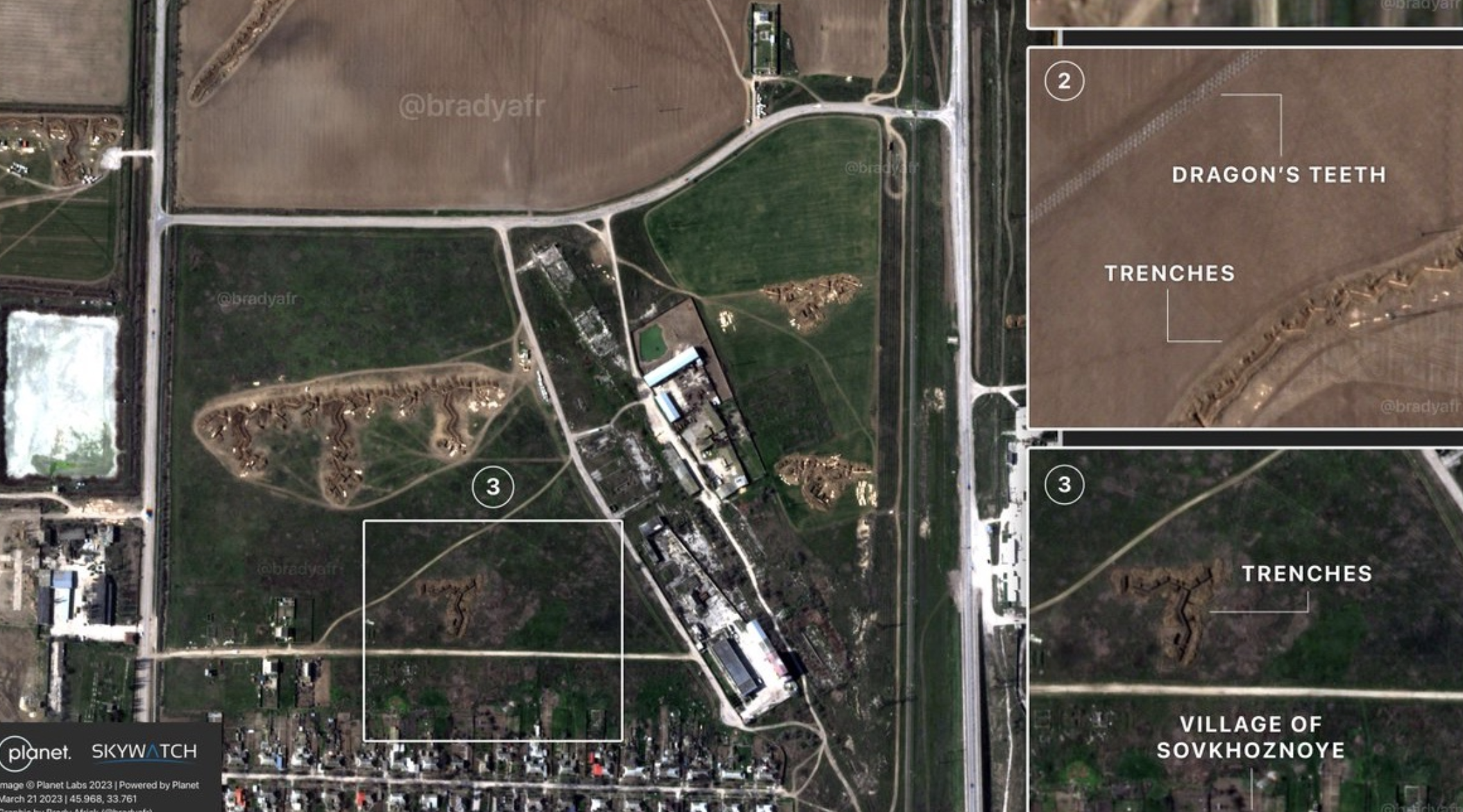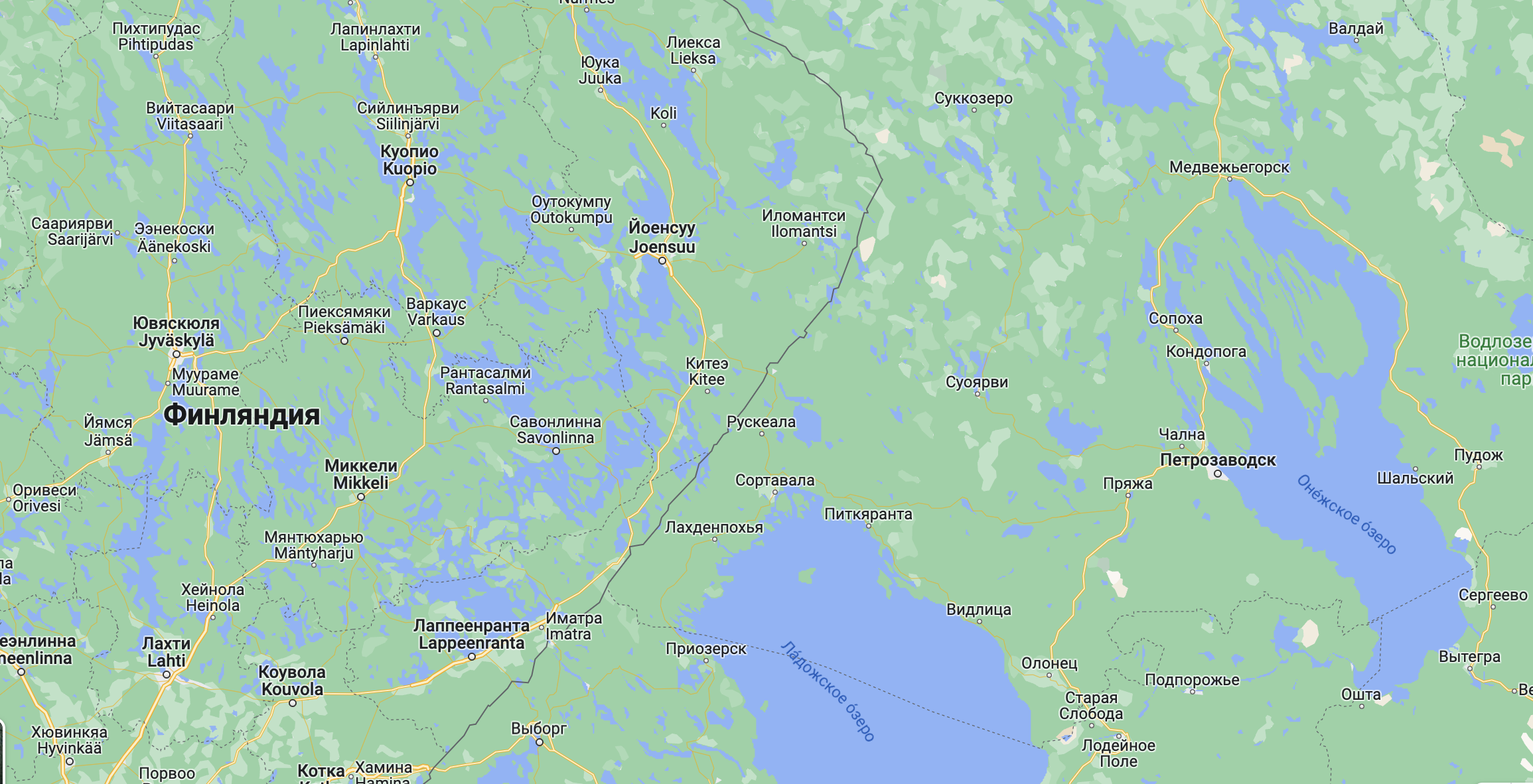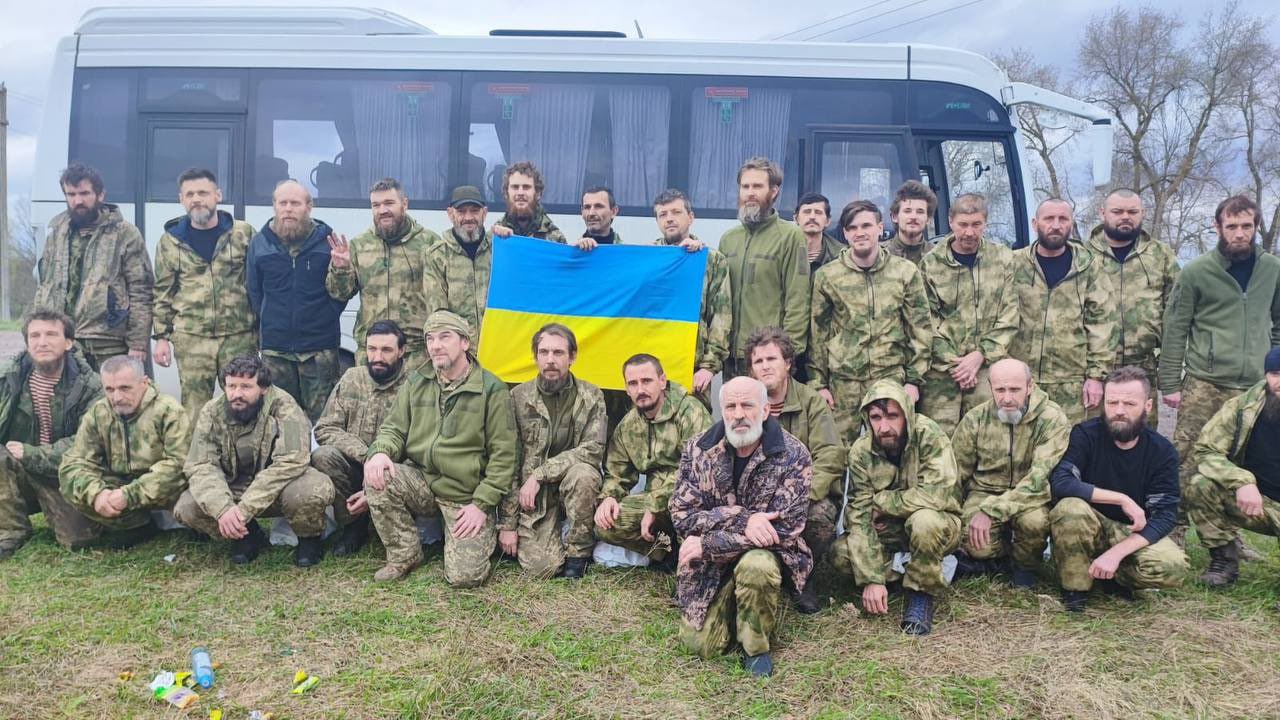In today's summary:
- There are two hot directions at the front – Bakhmut and Avdeevka. Igor Strelkov writes that Russian forces are suffering serious losses;
- 750,000 Russians will become "veterans of the SVO", almost 16,000 veterans will be disabled of various groups, follows from the assessment of the state fund "Defenders of the Fatherland", which is headed by Putin's cousin Anna Tsivileva;
- Easter exchange of prisoners. Head of the Office of the President of Ukraine Andriy Yermak announced the return of 130 Ukrainians;
- Mobilized from the Moscow and Ivanovo regions recorded a video message with complaints that they were illegally taken from Rostov-on-Don to the Luhansk region and their military tickets were taken away from them. Telegram channel Astra posted a video with them;
- Test distribution of electronic subpoenas through the State Services and SMS will begin during the spring call for military service, said the military commissar of Moscow Maxim Loktev;
- The death toll as a result of the shelling of Sloviansk increased to 15. In total, 34 high-rise buildings, 20 private houses, civilian infrastructure and 12 cars were damaged;
- Deliveries of weapons to Ukraine. Slovakia has completed the transfer of 13 MiG-29 fighters to Ukraine: four were transferred back in March, the remaining nine have been delivered now.
The situation at the front
The Komsomolskaya Pravda military commander Alexander Kots posted on Telegram a video from the northern flank of the Russian positions near Bakhmut , which, according to him, is covered by paratroopers of the 106th Airborne Division (the military commander, like the Russian Armed Forces, calls the city Artemovsk). According to Kots, the Russian troops now have a strong line of defense, as they are located on a profitable site, on a hillock.
“There is a field between us – they won’t go across it. The infantry will twitch, we will mow. They will go to the equipment, we will fry them with these things (pats on the ATGM). We understand that we can hit the “musicians” in the flank, we will defend with all our strength – possible and impossible.”
Ex-Minister of Defense of the “DPR” Igor Girkin (Strelkov), who actively covers the situation at the front, claims that there are now two main hot spots in Ukraine. According to him, fierce street fighting continues in Bakhmut , the Armed Forces of Ukraine are slowly being forced out of the western part of the city, and Wagner PMCs are also “feeding” army units and mobilized. Attack aircraft cannot cope without the latter, as there are serious losses. The second hot destination is Avdiivka , says Girkin. He writes that now the attacks are carried out without sufficient artillery preparation, the army lacks shells and armored vehicles.
Russian troops during the war with Ukraine are adapting at the strategic, tactical and operational levels, said retired Australian Army Major General and CSIS researcher Mick Ryan. According to him, contrary to the stereotypes that developed during the war, in some areas the Russian troops demonstrate the ability to learn and adapt.
In particular, the Russian military changed tactics in close combat: at the beginning of a full-scale invasion, they tried to carry out large-scale combined-arms maneuvers, but because of this, the Armed Forces of Ukraine were able to attack supply routes. One such example, Ryan called an attempt by Russian troops to cross the Seversky Donets. After that, the military adapted, which can be judged by the withdrawal of troops from Kherson in October and November 2022, as well as the deployment of a group of mercenaries from the Wagner PMC in 2022, especially in the Bakhmut area. At the same time, Russian troops were creating defensive lines in the east and south of Ukraine, Ryan noted that he spoke about the usefulness of defensive belts and zones at the tactical and operational levels as early as November 2022.

Military expert Oleksandr Kovalenko said in a conversation with The Insider that, according to the experience of 2022, it takes up to 5-6 months for the Armed Forces of Ukraine to counteroffensive, and for the complete liberation of the territories of Ukraine, Ukrainian troops need to carry out three counteroffensives. Based on this, the expert suggested that the hostilities would continue in 2024, in the same year the war could end. The next year may be decisive in order to put an end to the issue of the conduct of hostilities in all areas.
“If we talk about the support of Ukraine by the West, in addition to those issues that are solved in-line using the resources that are available, we will move into a period when it will be necessary to use the zero-production cycle, i.e. use products that are produced here and now, such as ammunition. This support is indispensable."
The expert also expressed disagreement with the fact that the Russian army is adapting at the operational, tactical and strategic levels at once. For example, a number of problems of a general nature have not yet been resolved in the Russian troops, in particular, logistics, provision of troops, provision of forward units and the command and control systems of these units. All this has remained unchanged from the period when the full-scale invasion of Ukraine was just beginning, Kovalenko added.
“Even relatively recently, in the Maryinka area, we observed a large accumulation of tank units of Russian military personnel and their formation of battle order consisted in the classical scheme, which is a consequence of the lack of appropriate capabilities in the command and control system. If at that time there was an M-142 HIMARS somewhere nearby, then there would be little left of this accumulation of tanks, so they were lucky. And the offensive in the direction of Vuhledar in late January and early February, which failed, only confirms that nothing changes tactically and they make the same mistakes – starting from the columns with which they attacked and burned in the cities of Ukraine, for example, in the same Bucha and along the routes in the Kiev and Chernihiv regions. They also crossed the Seversky Donets and lost almost a battalion-tactical group in a day. We are now seeing something similar in other areas.”
According to Kovalenko, the resource of the Russian army is depleted, the RF Armed Forces continue to remove old Soviet equipment from conservation, for example, T-54 and T-55 tanks.
NATO has been preparing for potential hostilities on its borders since the beginning of Russia's full-scale invasion of Ukraine, writes The New York Times, citing current and former members of the alliance. NATO has changed from the "deterrence by retaliation" strategy that dominated the Cold War to a "deterrence by prohibition" strategy because of the war in Ukraine. This means more troops on the border with Russia, deeper integration of US and allied military plans, increased military spending, and more detailed demands on allies in terms of military composition.
On April 4, Finland officially became the 31st member of NATO, as a result, the total length of the land border of Russia with NATO countries increased from 1215 km (with Poland, Lithuania, Latvia, Estonia and Norway) to 1300 km (with Finland), that is, more than doubled . Finland, along with Sweden, applied to join NATO after the start of a full-scale invasion of Ukraine. Sweden's entry is still hampered by Türkiye.

750,000 Russians will become "Veterans of the Northern Military District"
At least 750,000 Russians will take part in the war with Ukraine, according to an assessment of the state fund Defenders of the Fatherland, which is headed by thecousin of Russian President Vladimir Putin, Anna Tsivileva. Such figures are named in the presentation intended for official use, the project "We Can Explain" found out . The authors also calculated that almost 16,000 veterans will be disabled of various groups. As of February 1, more than 72 thousand people received the status of "veteran of the Northern Military District", more than 1.5 thousand returned with disabilities.
After 14 months of war with Ukraine, there will be more veterans in Russia than after 10 years of the Afghan war and 12 years of both Chechen wars. According to the BBC as of April, the names of at least 20,451 Russian soldiers who died in the war in Ukraine have been identified. The biggest losses are suffered by prisoners fighting in the Bakhmut area.
Easter prisoner exchange
A large Easter exchange of prisoners took place on April 16, the head of the Office of the President of Ukraine Andriy Yermak announced the return of 130 Ukrainians.
"Easter. Hope is the essence of this holiday. This is what the relatives of the prisoners felt, who had been waiting for this for so long.”

The press service of the head of PMC Wagner Yevgeny Prigozhin also published a video showing prisoners of war returning to Ukraine on the eve of Easter. In the video, Prigozhin turns to the fighter with a hidden face and gives instructions to prepare and feed everyone, as well as examine the wounded. After that, the military was ordered to get into the truck, at the end of the video, the military walked in the ranks, some of them were carried on stretchers.
Appeal of the mobilized
Mobilized from the Moscow and Ivanovo regions recorded a video message with complaints that they were illegally taken from Rostov-on-Don to the Luhansk region and their military tickets were taken away from them. The video was published by the Astra Telegram channel.
“We, military personnel of military unit 11048 and military unit 61899 from the field camp “Inns” (Kursk region) were sent, according to Lieutenant Colonel Maetsky and Colonel Yermak, to be transferred to the Southern Military District towards Crimea, we were not shown a combat order , there were no officers with us, after that we arrived in Rostov to the 136th motorized rifle brigade, where only conscripts serve, where we had soldiers gathered under the pretext that they would affix new seals there about the transfer to the unit and it was said that the military will return within one day. At the moment, five days have passed since those words, the documents have not been issued.<…>.
Many of us are incompetent. They have category "D". They cannot perform combat missions. Many people need medical assistance, which they cannot provide here in the field,” the soldiers said in the video. I won’t name the people who received us here, but they help us, thanks to them.”
Native soldiers told the publication that the video shows part of a group of 500 mobilized, who were sent on April 5 by three cargo planes from Kursk to Rostov-on-Don for "training and transfer to submission to a local military unit." However, at night the men were taken to the Luhansk region and separated. One of the groups of soldiers recorded a video message.
The officer of the Armed Forces of Ukraine, who tweets under the nickname Tatarigami, suggested that the situation of these mobilized is connected with the activities of the new PMC "Wolves", which, according to him, is active in the Bakhmut area. He drew attention to the statement of the “analyst Wagner” that they began to receive voluntarily mobilized people, and added that in fact, as follows from the appeals, they refuse to sign contracts. Perhaps this new PMC, created as a “daughter” of Wagner, is intended for mobilized or other military personnel who, in one way or another, come to the disposal of mercenaries.
Electronic summonses due to lack of resources
Test distribution of electronic subpoenas (“alerts”) through the State Services and via SMS will begin during the spring conscription for military service (from April 1 to July 15), said Moscow’s military commissar Maxim Loktev. At the same time, a clarification appeared in the TASS news later. Loktev added that test mailing of digital subpoenas will be possible “only after the adoption of a resolution by the Russian government.” Even before the adoption of the law, Andrei Kartapolov, chairman of the State Duma Defense Committee, stated that the amendments on electronic agendas would not apply to the spring draft.
Electronic summonses will be sent in a harsh and repressive mode, and the authorities will demand that the law be enforced without fail, which indicates a lack of human resources to “cover the entire foothold of hostilities,” military expert Alexander Kovalenko said.
“Even if we talk about Bakhmut, it is also remarkable here. PMC Wagner is already almost all in the city, and there are still airborne units. Units of the 98th Airborne Division, which was located to the north in the Kremennaya location, are being pulled into Bakhmut. Some of its units are pulled to Bakhmut because there is not enough resource. From Avdiivka, part of the units of the rear of the 20th division is also being pulled to Bakhmut.
All this speaks of a lack of human resources and the plans of the Russian command to somehow compensate for this human resource through repressive methods of mobilization with which they are experimenting. How long will they have enough of such a recruitment regime that cannot plug holes even as part of an offensive against a small town? After all, Bakhmut is a small town, and we are talking about colossal territories of tens of thousands of square kilometers, and it follows from this that the amount of forces and means that the Russian army currently has is not enough to carry out any then offensive actions of an aggressive type. At some point, this line of possibilities for conducting defensive operations will be overcome and the prolongation of the war as such is not to the benefit of Russia itself, since, returning to the issue of resources, we see that the Soviet resource is being used. There is no domestic production as such. We are now witnessing how the Russian army is demilitarizing itself, and this will lead to the fact that the prolongation of the war only denigrates and bleeds the Russian army.”
The death toll during the shelling of Slovyansk increased to 15
On April 14, Slovyansk was hit by a Russian missile attack, presumably from S-300 launchers. The head of the Donetsk Regional Military Administration (OVA), Pavel Kirilenko, specified that 15 people were killed in the attack and 24 were injured.

In total, as a result of the shelling of Slavyansk, 34 high-rise buildings, 20 private houses, civilian infrastructure facilities and 12 cars were destroyed, the Interior Ministry said. The OVA specified that the Russian army fired seven S-300 missiles at Slovyansk, six of which hit residential buildings, and one exploded in the landscape park.
Arms supplies to Ukraine
Slovakia has completed the transfer of 13 MiG-29 fighters to Ukraine: four were transferred back in March, the remaining nine have been transferred now. Slovak Minister of Defense Jaroslav Nagy wrote about this on Twitter.

The Armed Forces of Ukraine are already using several dozen 155-mm self-propelled artillery mounts (ACS) M109L, transferred by Italy, on the front line, La Repubblica reports , citing sources. In total, 60 such self-propelled guns will be delivered, about 30 M109L may already be in the Armed Forces of Ukraine. In the published video, the installations were filmed at the railway station in Udine – before departure.
About the main events of the war on April 14 – in the previous report: “The battles for Maryinka and Bakhmut, the shelling of Slavyansk, American intelligence about the losses of special forces of the RF Armed Forces. What's happening on the front line .


